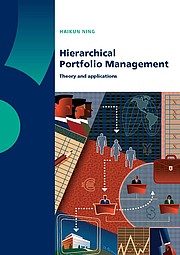Hierarchical Portfolio Management: Theory and Applications Defended on Thursday, 20 December 2007
Under his own preference, how should an investor coordinate the asset managers such that his aggregated portfolio is optimized? The efficiency of each managed sub portfolio and the aggregation of all the sub portfolios are the 2 main underlying problems considered in this dissertation. Contrary to popular believes, the tracking error volatility (TEV) optimization, commonly used to find the optimal active portfolio, often yields inferior portfolio choices. The results in this dissertation together with those in Jagannathan and Ma (2003) underscore how effective simple portfolio optimization techniques can be. In aggregating all the sub portfolios, the investor’s choice is limited if the managers only report the local optimal portfolio. Since the reported portfolios are the result of a stand-alone optimization within the sub portfolio while disregarding all the rest, each reported portfolio can only be optimal locally. A rational investor should and must demand for more choices than the locally optimal choice alone. Using simple examples in the single and multi period setting, this dissertation illustrates how significant the improvement in aggregated portfolio performance can be, both in terms of expectation as well as realization. Given the insufficiency of the TEV optimization, the inherent question is whether the active performance measures like the information ratio still suffice in judging a manager’s performance. As it turns out, the investor should be very careful when applying the active performance measures. Preferably, the Sharpe ratio should be used to judge the added value of a manager to the aggregated portfolio.
Keywords
Multi-level investment decision, bottom-up portfolio selection, (active) portfolio management, (active) performance evaluation










